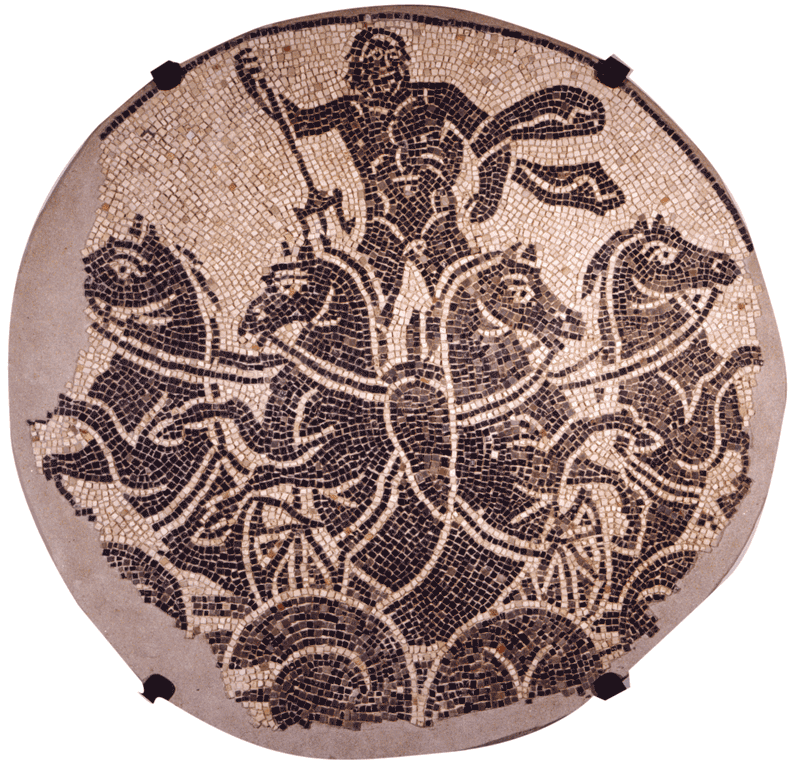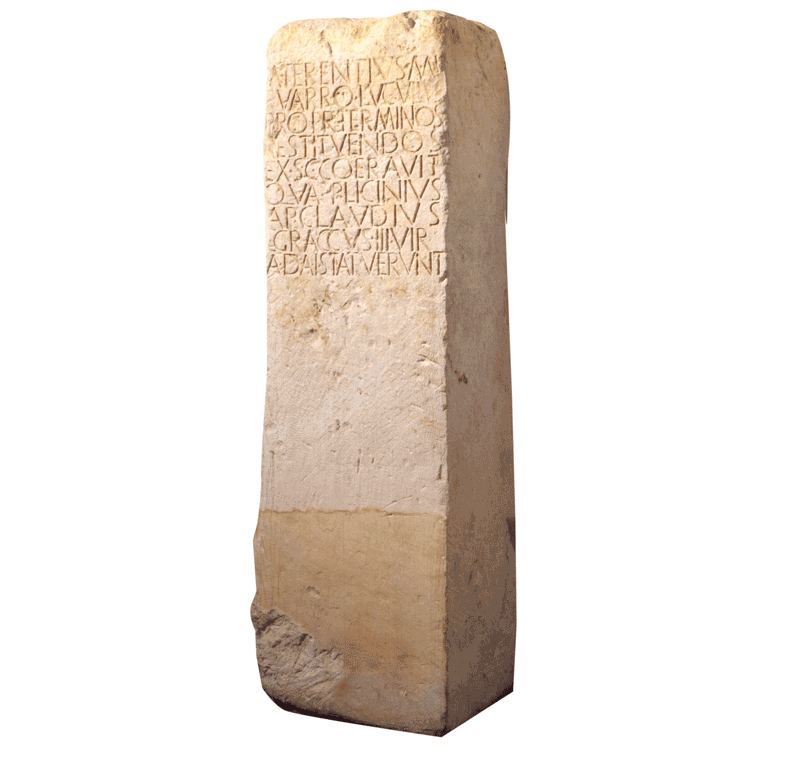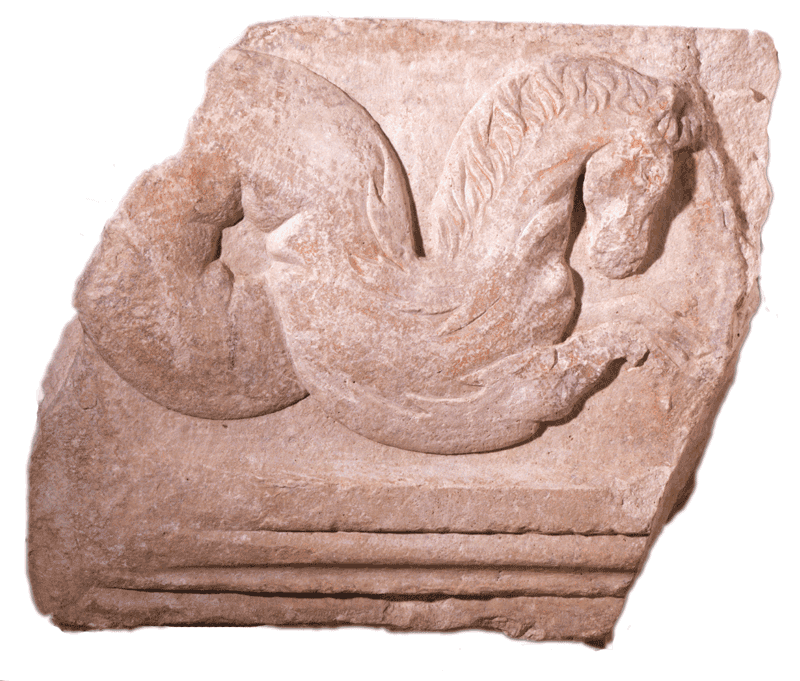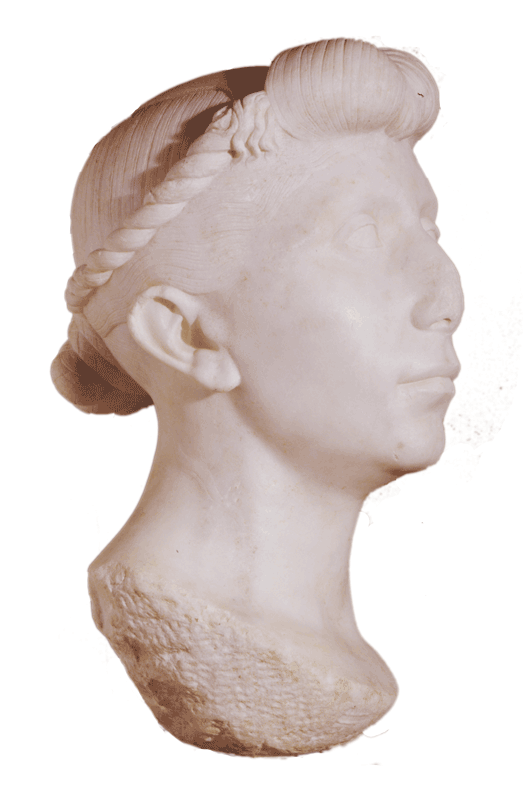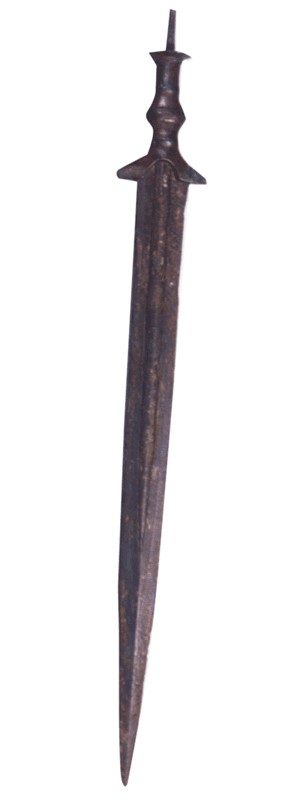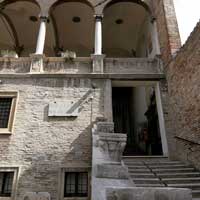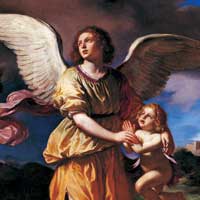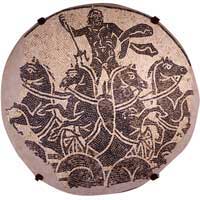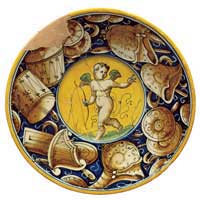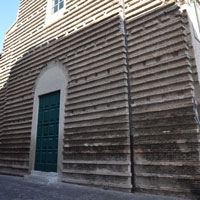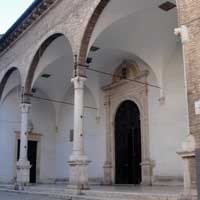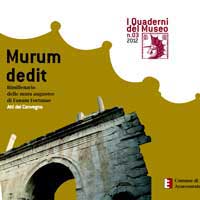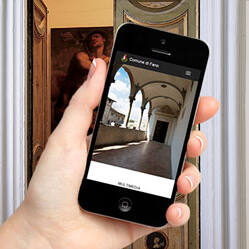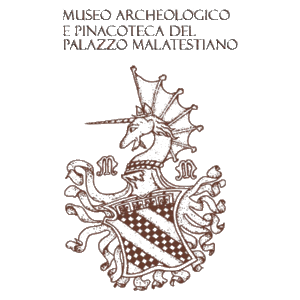
This section is housed in six halls on the ground floor and in the interior of the portico of the Malatesta Palace. It contains prehistoric, protohistoric and Roman finds, coming from private collections, from antique dealers, from chance discoveries and from excavations both inside and outside the area of ancient Fanum Fortunae. In the interior of the portico, one can admire the so-called “Panther Mosaic”, a beautiful black and white floor mosaic from a Roman domus dating back to the 2nd century AD. Other pieces on display are a Roman dolium – a large earthenware vase for the storage of food – and three early Christian sarcophagi dating from around the 5th - 6th century.The first hall contains stone artifacts from the Lower Paleolithic, objects from the Neolithic to the Bronze Age and the Iron Age, fragments of pottery, bone and bronze tools. Of particular interest are an Attic crater, a bronze sword, fibulae, pendants and bowls. The second halls contains kitchen tools from Roman times, such as glass bottles and balm containers, as well as pottery. Another noteworthy piece is the so-called “cippo graccano”, a Roman boundary stone from the 1st century BC, which bears an inscription about the restoration of boundaries under Caius Gracchus’s land-commission. The hall of the milestones and of the amphorae contains four milestones from the Via Flaminia, dedicated to Roman emperors, as well as a Mithraic bas-relief depicting a winged, half-naked man (presumably the Greek god Chronos), the marble altar dedicated to the sun god, the Sol Invictus, a head of Heracles, the statue of the Roman goddess of the hunt Diana, and the divine triad depicting Apollo, his mother Latona and his sister Artemis.
The following hall, the Sala del Nettuno, contains fragments of entablatures and marble cornices, fragments of terracotta floors, a black and white mosaic portraying the god Neptune holding his trident and standing on a chariot pulled by sea horses, and a Corinthian capital. At the entrance of the last hall of the archaeological section stands the monumental statue of Emperor Claudius. Octavia, Emperor Augustus’s sister, is presumably the young woman with elegantly coiffed hair portrayed in one the female portraits. The double herm of a young satyr and an old silenus is the last piece of the collection. Besides statues, a collection of inscriptions is displayed, which includes tombstones and inscriptions referring to public works and mentioning prominent persons, magistrates and communities of the former Colonia Iulia Fanestris (Fano).

